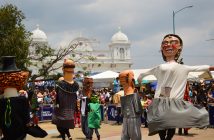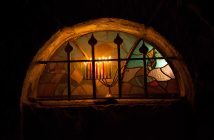Its roots come from Europe and Africa. The two most widespread streams of Cuban popular music are the Danzón and the Son.
If there is something truly appealing about Cuba, among its many attractions, it is music. It is well known to everyone that Cuban music surrounds us, entraps us in its ancestral Afro-Cuban rhythms. On this occasion, we here in Lookout want to delve into and learn a little more about the origins and variety of Cuban popular music.
To understand the Afro-Cuban music we need to know that the most common in Cuba are Yoruba or Santaria, Abakua and Palo. Danzón and Son represent, on the other hand, the two most influential currents of Cuban popular music. The origins of Danzón are very interesting, it is today a truly amazing art form.
The Danzón is very peculiar and if we were to highlight any part of it, it would be its particular fourth beat of bar four accompanied by a percussion that does not go unnoticed. By repeating the introduction, the dancers stop, talk, look at each other, greet each other … And then, go back to dancing …
Bolero and cha cha cha are sung melodies that were included in the ’50s in the structure of the Danzón. We are talking about new additions to Danzón, such as choruses are taken from the Son, for example “El Bombín de Barreto,” the key piece of the Danzón.
Subsequently, the ensembles playing the music of violins and flutes began to play the popular Guaracha, a much more upbeat type of music. In the ’70s, the Van Van launched the Songo, a mix of Son and Rumba. On the other hand, the Timba has remained impassive throughout Cuban music for 300 years, witnessing the arrival of diverse Cuban influences.
If we want to find the Andalusian influence in Cuban music, no doubt the Punto Güajiro will captivate us. Since the eighteenth century, before the Son came to being, its Andalusian origins have evolved in Cuba. The music consists of several instruments, among them the guitar.
We can not forget the Bolero and the Cuban Trova. Despite its Spanish origin, the Cuban bolero has nothing to do with the Spanish one. The popular Trova of Santiago de Cuba was responsible for promoting it in the late nineteenth century. It is a very beautiful music, with perfect harmonies, performed by all types of musicians all across Latin America.
Last but not least, the great Cuban son, arguably the most prestigious music that exists in Cuba. Based on the salsa, it contains Spanish and African influences. It can be perceived in its rhythms and instruments: guitars, maracas, bass … Later, with the addition of trumpets, piano and conga, son culminates with the typical Cuban hunch that moves the world’s most captivating music …
BlueBay Group has in Varadero its hotel BelleVue Palma Real ****, the first themed hotel all about the dance and most authentic Cuban experience: the passion for dance and traditional Cuban music. Thanks to BlueBay Salsa Club, over the course of seven days we can learn several Latin rhythms like Son, Cha cha cha, Yambú, Guaguanco, Columbia, Rumbo, Casino… Unforgettable nights and memorable moments in BelleVue Palma Real **** in Varadero…






